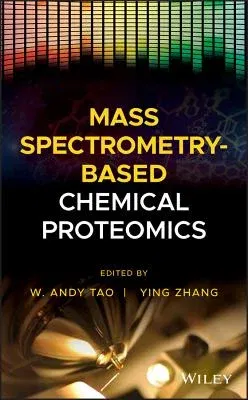PROVIDES STRATEGIES AND CONCEPTS FOR UNDERSTANDING CHEMICAL
PROTEOMICS, AND ANALYZING PROTEIN FUNCTIONS, MODIFICATIONS, AND
INTERACTIONS--EMPHASIZING MASS SPECTROMETRY THROUGHOUT
Covering mass spectrometry for chemical proteomics, this book helps
readers understand analytical strategies behind protein functions, their
modifications and interactions, and applications in drug discovery. It
provides a basic overview and presents concepts in chemical proteomics
through three angles: Strategies, Technical Advances, and Applications.
Chapters cover those many technical advances and applications in drug
discovery, from target identification to validation and potential
treatments.
The first section of Mass Spectrometry-Based Chemical Proteomics
starts by reviewing basic methods and recent advances in mass
spectrometry for proteomics, including shotgun proteomics, quantitative
proteomics, and data analyses. The next section covers a variety of
techniques and strategies coupling chemical probes to MS-based
proteomics to provide functional insights into the proteome. In the last
section, it focuses on using chemical strategies to study protein
post-translational modifications and high-order structures.
- Summarizes chemical proteomics, up-to-date concepts, analysis, and
target validation
- Covers fundamentals and strategies, including the profiling of enzyme
activities and protein-drug interactions
- Explains technical advances in the field and describes on shotgun
proteomics, quantitative proteomics, and corresponding methods of
software and database usage for proteomics
- Includes a wide variety of applications in drug discovery, from kinase
inhibitors and intracellular drug targets to the chemoproteomics
analysis of natural products
- Addresses an important tool in small molecule drug discovery,
appealing to both academia and the pharmaceutical industry
Mass Spectrometry-Based Chemical Proteomics is an excellent source of
information for readers in both academia and industry in a variety of
fields, including pharmaceutical sciences, drug discovery, molecular
biology, bioinformatics, and analytical sciences.

